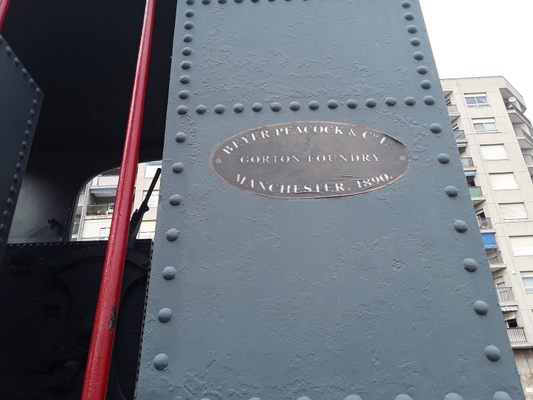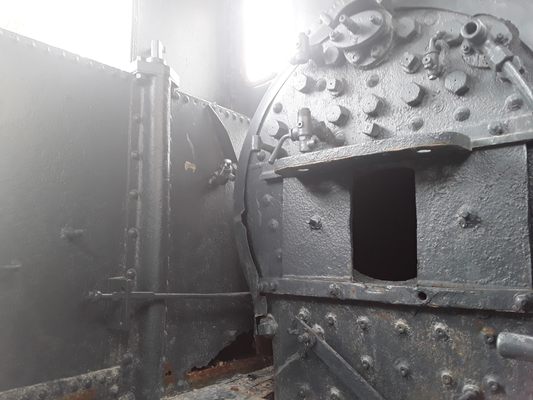About
Constructed in Openshaw, Manchester, England in 1890, this is one of eight locomotives that once traversed the Alcoi to Gandia railway from its inception in 1892.
The line was used to export textiles and paper to the coast from the inland town of Alcoi (also called Alcoy). It was also responsible for importing English coal from the port at Gandia to power the many steam-powered textile and paper mills in the town. This occurred after the industry largely abandoned the exclusive use of water power from the River Serpis and other rivers that combine at Alcoi. Agricultural produce from the region was also exported via the port at Gandia.
The locomotive sits proudly beside the main road through the town (N-340) and is, like the original eight, named after one of the stations on the line. They were constructed by the Beyer, Peacock Company and were specifically designed to suit the demanding route. The wheel arrangement was 2-6-2.
Known as "el tren de los ingleses," the railway was actually English owned, as the company had offices in both Alcoi and London. The company was also responsible for the extension of the harbor in Gandia, making it the second-largest fruit exporting harbor in Spain. The line was about 53 miles (85 kilometers) long. In 1907 it was linked to the Villena-Yecla line at Muro de Alcoi. This allowed a greater variety of locomotive power to be utilized on the line into Alcoi, including in later years, diesel multiple units. The combined line was known as "el Xixarra."
During the 1920s, work began on an alternative (broader gauge) line between Alcoi and Alicante. The hope was to be able to get textiles quickly to the coast, however, construction was interrupted by the Spanish Civil War and was never completed. The Xixarra line remained in use until 1969.
There are two surviving, preserved locomotives from that line, 24 miles (40 kilometers) of which has now been converted to a cycle track/footpath called the Serpis Greenway (from Muro de Alcoi to Gandia). The other locomotive, No. 7, is located near to the coastal terminus at Gandia.
Related Tags
Know Before You Go
The locomotive is next to a square called Plaça al Azraq, but this open space has now become a large parking area. Parking is free, but the entrance by road is hard to find. If using GPS use Av. Hispanitat.
While there is nothing stopping visitors from climbing onto the footplate, please be aware, this is not officially sanctioned and, to be honest, there is little there to see as all the brass parts have been removed. The locomotive is certainly not preserved in working order.
The info board next to the locomotive is in Spanish and Valencian, but has become rather foggy and hard to read because of deterioration.
If off-road cycling is your thing, it's possible to cycle from Gandia to Alicante by linking the Serpis, Alcoy and Maigmo greenways with only about 10 miles of on-road cycling. Another nine miles of the Xixarra line (from Biar near Villena has also been converted into a greenway and is known as the Xixarra greenway)
Nowadays, rail services to Alcoi are from Valencia and Villena (served by the Madrid line). A regular bus runs from Alicante.
Published
February 25, 2020
Sources
- https://www.google.com/url?sa=t&source=web&rct=j&url=https://www.viasverdes.com/en/itineraries/itinerario.asp%3Fid%3D16&ved=2ahUKEwizgL3mvMHnAhUJ8xQKHYviDMkQFjAAegQIBhAB&usg=AOvVaw167hyLnPd7FwPM9X9GzhBM
- https://en.wikipedia.org/wiki/Beyer,_Peacock_and_Company
- https://en.wikipedia.org/wiki/Whyte_notation































